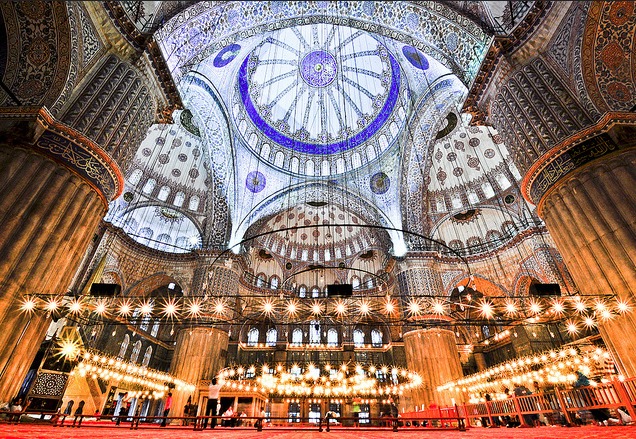The Blue Mosque, also known as Sultan Ahmed Mosque (Sultan Ahmet Camii), is one of Istanbul’s most iconic landmarks. Located in the historic Sultanahmet district, this magnificent mosque is a masterpiece of Ottoman architecture and a symbol of Istanbul's rich cultural heritage. With its elegant domes, towering minarets, and stunning interior, the Blue Mosque offers a serene yet awe-inspiring experience for all who visit.
Getting There
The Blue Mosque is easily accessible by public transport. The Sultanahmet tram stop is just a short walk away, making it convenient for visitors coming from various parts of Istanbul. The mosque is situated near other historical landmarks, such as Hagia Sophia and Topkapi Palace, allowing for an immersive exploration of the city’s heritage.
A Historical and Architectural Marvel
Commissioned by Sultan Ahmed I in the early 17th century, the Blue Mosque was designed by the renowned architect Sedefkâr Mehmed Ağa. It was constructed between 1609 and 1616 and stands as a testament to the grandeur of the Ottoman Empire.
The mosque is renowned for its six minarets, a feature that was unprecedented at the time and symbolizes its significance. Its interior is adorned with over 20,000 handmade Iznik tiles, predominantly in shades of blue, which give the mosque its nickname. Intricate calligraphy, floral motifs, and stained glass windows add to the breathtaking beauty of the interior.
What to Explore
-
The Courtyard: The expansive courtyard, surrounded by a peristyle of arches, is a tranquil space that prepares visitors for the grandeur within. The ablution fountains and marble walkways add to its serene atmosphere.
-
The Main Prayer Hall: The spacious prayer hall is the heart of the mosque, featuring a large central dome supported by four massive columns known as "elephant feet." The harmonious interplay of light, color, and design creates a sense of spiritual awe.
-
The Mihrab and Minbar: The intricately carved mihrab (prayer niche) and minbar (pulpit) showcase the artistry of Ottoman craftsmanship. These elements are focal points for prayer and reflection.
-
The Dome: The central dome, adorned with intricate calligraphy and geometric patterns, rises to an impressive height, inspiring both reverence and admiration.
-
The Surroundings: The mosque is surrounded by beautifully landscaped gardens and fountains, offering picturesque views and peaceful spots for rest and contemplation.
Tips for Visitors
-
Dress Modestly: As an active place of worship, visitors are required to dress modestly. Scarves and coverings are usually available at the entrance for those who need them.
-
Best Time to Visit: Early mornings or late afternoons are ideal for avoiding crowds and experiencing the mosque’s tranquil ambiance.
-
Respect Prayer Times: Non-Muslim visitors are welcome outside of prayer times. Be mindful of the schedule and maintain a respectful demeanor.
-
Photography: While photography is allowed, avoid using flash to preserve the mosque’s delicate interiors.
Conclusion
The Blue Mosque is more than just an architectural marvel; it is a living monument to Istanbul’s spiritual and historical legacy. Whether you’re drawn by its artistic beauty, its historical significance, or its serene atmosphere, a visit to the Blue Mosque is an unforgettable experience that connects you to the soul of Istanbul. Standing beneath its domes and minarets, visitors can truly appreciate the timeless elegance of Ottoman architecture and the enduring spirit of this magnificent city.
?



